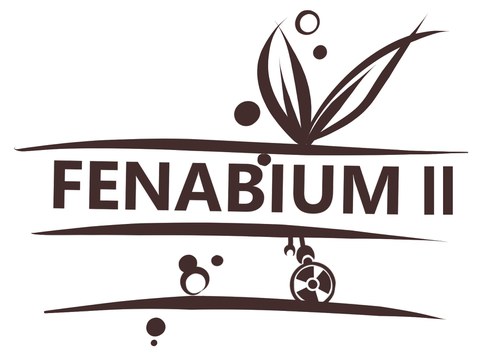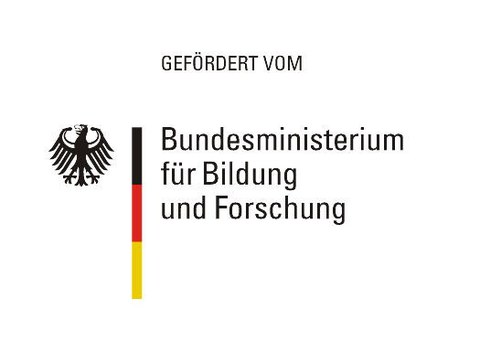02.05.2023
Nukleare Sicherheitsforschung: Verbundprojekt FENABIUM II untersucht Wechselwirkungen radioaktiver Substanzen mit biologischen Systemen
Gemeinsame Pressemitteilung von TU Dresden und HZDR
Im Verbundprojekt FENABIUM II untersuchen Forschende der TU Dresden, des Helmholtz- Zentrums Dresden-Rossendorf (HZDR) sowie der Universität Leipzig die Wechselwirkungen der sogenannten f-Elemente mit Biomolekülen. Ziel des Grundlagenforschungsprojekts ist es, aus den gewonnenen Erkenntnissen, Struktur-Wirkprinzipien abzuleiten, die im Falle einer Verbreitung dieser Elemente in Geo- und Biosystemen zum Tragen kommen. Damit soll eine Risikoeinschätzung, insbesondere auch im Hinblick auf den Eintrag in die Nahrungskette ermöglicht werden. Das Bundesministerium für Bildung und Forschung fördert das Verbundprojekt mit einer Gesamtsumme von knapp 2,9 Millionen Euro.
Im April 2023 wurden die letzten Atomkraftwerke in Deutschland abgeschaltet. Nun steht die Frage der sicheren Endlagerung des radioaktiven Materials im Vordergrund. Um den Schutz von Mensch und Umwelt zu gewährleisten, fördert das Bundesministerium für Bildung und Forschung wissenschaftliche Projekte im Rahmen der Nuklearen Sicherheitsforschung. Dazu zählt auch das im April gestartete Verbundprojekt „FENABIUM II - Untersuchungen zu den Wechselwirkungen von f-Elementen mit biologisch relevanten Strukturmotiven: Ableitung grundlegender Struktur-Wirkprinzipien für eine Mobilisierung in der Umwelt“, welches sich an das erfolgreiche Vorgängerprojekt FENABIUM (2016-2021) anschließt. Das Forschungskonsortium unter Leitung von Jan. J. Weigand, Professor für Anorganische Molekülchemie an der TU Dresden, möchte die grundlegenden Prozesse, die den Transport und die Anreicherung von radiotoxischen Elementen in der Geo- und Biosphäre, insbesondere der Nahrungskette, verantworten, näher verstehen, um daraus Grundlagen für Modelle für eine mögliche Verbreitung dieser Elemente in der der Umwelt abzuleiten, aber auch Ansätze für eine Dekontamination zu erarbeiten.
Dabei fokussiert das Projekt auf die sogenannten f-Elemente. Dazu zählen einerseits die Lanthanoide, die oft auch als „Seltene Erden“ bezeichnet werden. Sie sind Spaltprodukte, aber auch kritische Rohstoffe für die Energiewende und werden vor allem in elektronischen Geräten verbaut. Das sind beispielsweise die Elemente Neodym, Europium oder Gadolinium. Zum anderen gehören auch die Actinoiden zu der Gruppe der f-Elemente. Diese weisen eine entscheidende Bedeutung für die Kerntechnik und Fragen der sicheren Endlagerung auf. Dazu zählen die natürlich vorkommenden Elemente Thorium und Uran, sowie die im Reaktor erzeugten Elemente Neptunium, Plutonium, Americium und Curium. Des Weiteren birgt auch der Abbau sowie die Verarbeitung der Lanthanoide Risiken einer ungewollten Freisetzung. Gerade auch in Sachsen finden sich Überbleibsel des Uranabbaus aus DDR-Zeiten.
Wie verhalten sich die f-Elemente, nachdem sie in die Umwelt gelangt sind und vor allem, wie kann man sie daraus entfernen? Um effiziente Lösungen für dieses Problem zu finden, ist ein genaues Verständnis des Verhaltens dieser Elemente in der Umwelt nötig. Insbesondere die Frage, wie f-Elemente in die Nahrungskette eindringen und verteilen, wurde bisher nur unzulänglich erforscht. Das interdisziplinäre Konsortium aus Forschenden der Anorganischen -, Bioanalytischen –, Lebensmittel-, Koordinations- sowie Radiochemie wird diesen Fragen in den kommenden drei Jahren auf den Grund gehen. Im Verbundprojekt werden dazu zunächst bioinspirierte Modellverbindungen aufgebaut, die gebildeten f‑Elementkomplexe strukturell charakterisiert und deren thermodynamische Kenngrößen bestimmt, um ein grundlegendes Verständnis der vorherrschenden Wechselwirkungen zu erlangen. Ferner werden Studien an ausgewählten Aminosäuren und Peptidsequenzen sowie an lebensmittelrelevanten Proteinen durchgeführt. Im Mittelpunkt stehen dabei Caseine, die aus quantitativer Sicht wichtigste Gruppe von Milchproteinen. „Aufbauend auf den gewonnenen Erkenntnissen an den Modellliganden, können wir die Ergebnisse auf biologische Gesamtsysteme transferieren“, erläutert Projektleiter Prof. Jan. J. Weigand und ergänzt: „Wichtig für einen tiefgründigen Erkenntnisgewinn ist die intensive Zusammenarbeit mit Prof. Thorsten Stumpf am HZDR und Prof. Berthold Kersting von der Universität Leipzig. Während letzterer durch den Einsatz von komplexeren Grundstrukturen eine systematische Untersuchung von kooperativen Effekten erlaubt, ist die weitreichende Expertise sowie die exzellente Infrastruktur für Arbeiten mit Actinoiden am HZDR essentiell für eine umfassende Bearbeitung der Fragestellung und wird die Erfolgsaussichten des Verbundprojektes deutlich steigern“.
Ein weiterer wichtiger Aspekt des Projekts ist Ausbildung und Förderung des wissenschaftlichen Nachwuchses auf dem Gebiet der nuklearen Sicherheitsforschung. Neben der wissenschaftlichen Qualifikation der direkt an FENABIUM II beteiligten Doktorand:innen - sowohl bei den Projektpartnern als auch während mehrmonatiger Forschungsaufenthalte bei Kooperationspartnern im europäischen sowie außereuropäischen Ausland - sind weiterführende Maßnahmen wie Summer Schools und eine Wissensvermittlung in Form eines „Radioökologie Open Online Moduls“
(ROOM) Bestandteil von FENABIUM II.
Über FENABIUM II
Am 1. April 2023 startete das Folgeprojekt FENABIUM II aufbauend auf den Erkenntnissen und der erfolgreichen Zusammenarbeit der Verbundpartner im Projekt FENABIUM. Unter der Leitung von Prof. Jan J. Weigand von der Anorganischen Molekülchemie der TU Dresden arbeiten Prof. Eike Brunner (Bioanalytische Chemie, TU Dresden), Prof. Thomas Henle (Lebensmittelchemie, TU Dresden), Dr. Margret Acker (Zentrales Radionuklidlabor, TU Dresden), Prof. Berthold Kersting (Anorganische Chemie/Koordinationschemie, Universität Leipzig) sowie Prof. Thorsten Stumpf (Institut für Ressourcenökologie, HZDR) an verschiedenen Teilprojekten. Das Bundesministerium für Bildung und Forschung fördert den Forschungsverbund mit einer Gesamtsumme von knapp 2,9 Millionen Euro. Durch die vom BMBF geförderten Forschungstätigkeiten wird ein substanzieller Beitrag zu Aufbau, Weiterentwicklung und Erhalt der wissenschaftlich-technischen Kompetenz und zur Nachwuchsförderung im Bereich der nuklearen Entsorgung in Deutschland geleistet. FENABIUM II ist ein gelungenes Beispiel für die erfolgreiche Zusammenarbeit Dresdner Forschungseinrichtungen in der Wissenschaftsallianz DRESDEN-concept e.V.
Webseite: https://tu-dresden.de/mn/chemie/ac/ac3/kooperation/fenabium-ii
Kontakt für Journalisten:
Prof. Jan J. Weigand
Professur für Anorganische Molekülchemie
TU Dresden
Tel.: +49 351 463-42800
Prof. Thorsten Stumpf
Institut für Ressourcenökologie
Helmholtz-Zentrum Dresden - Rossendorf e. V.
Tel.: +49 351 260-3210


